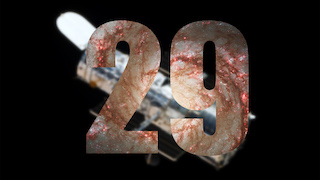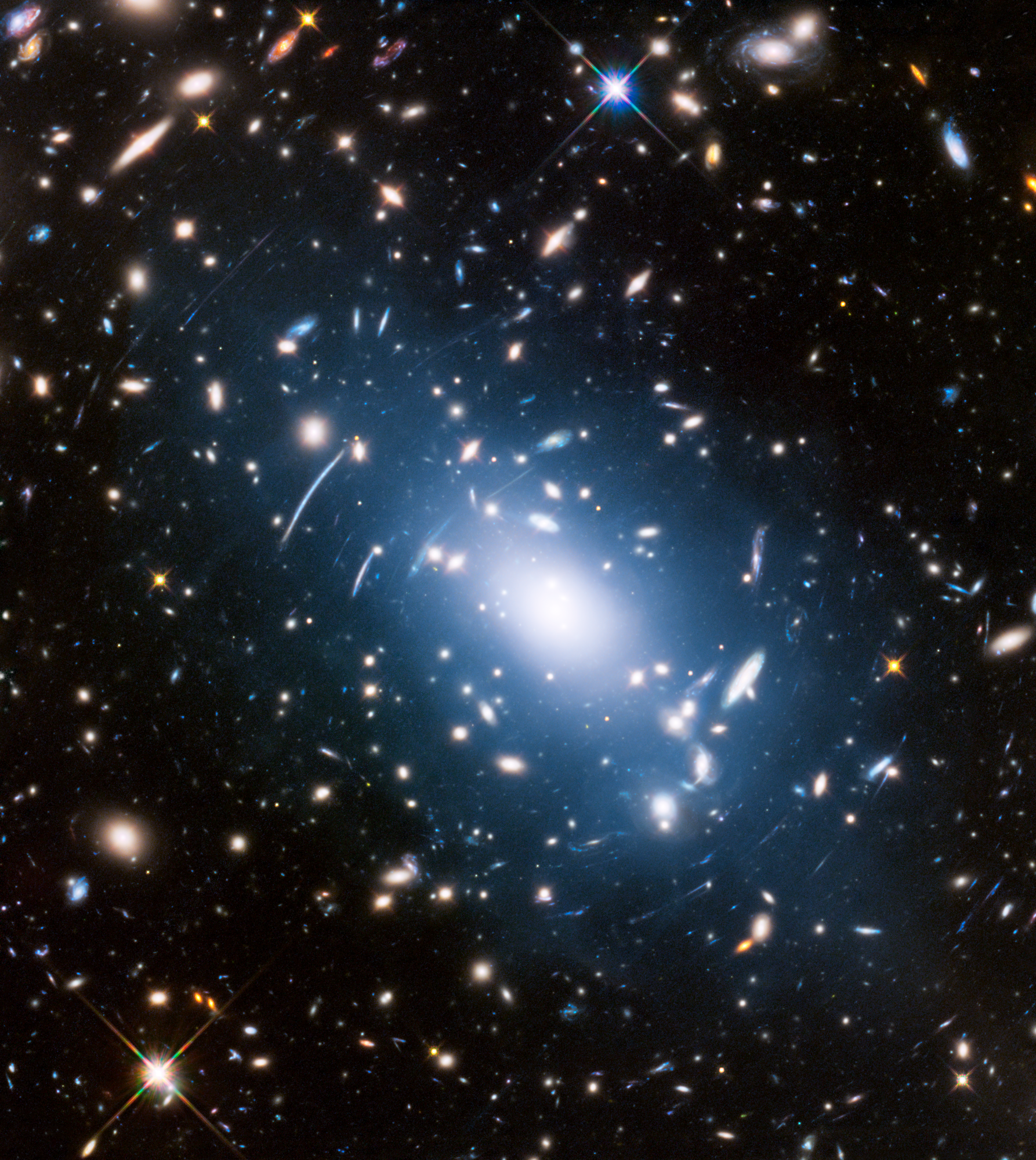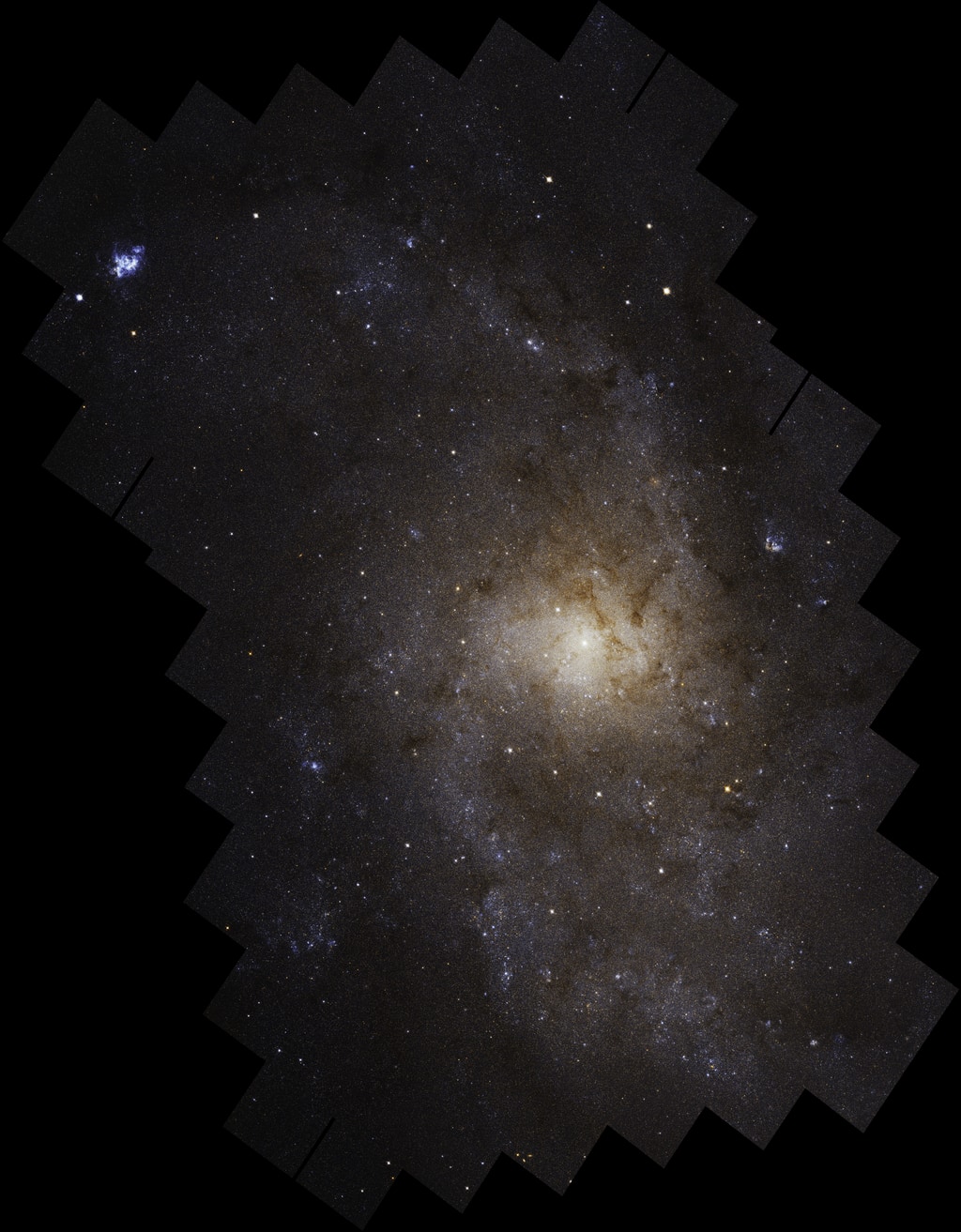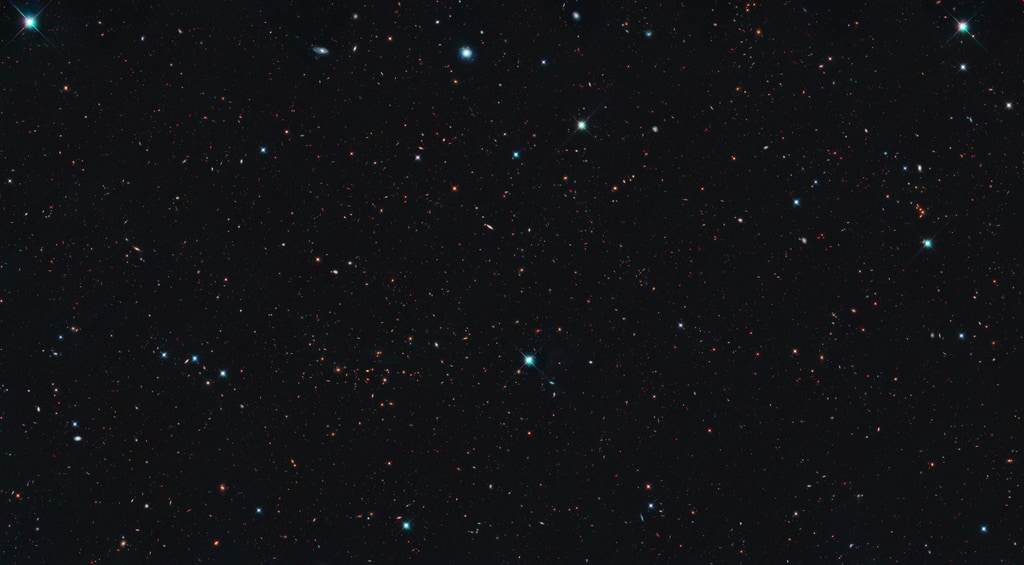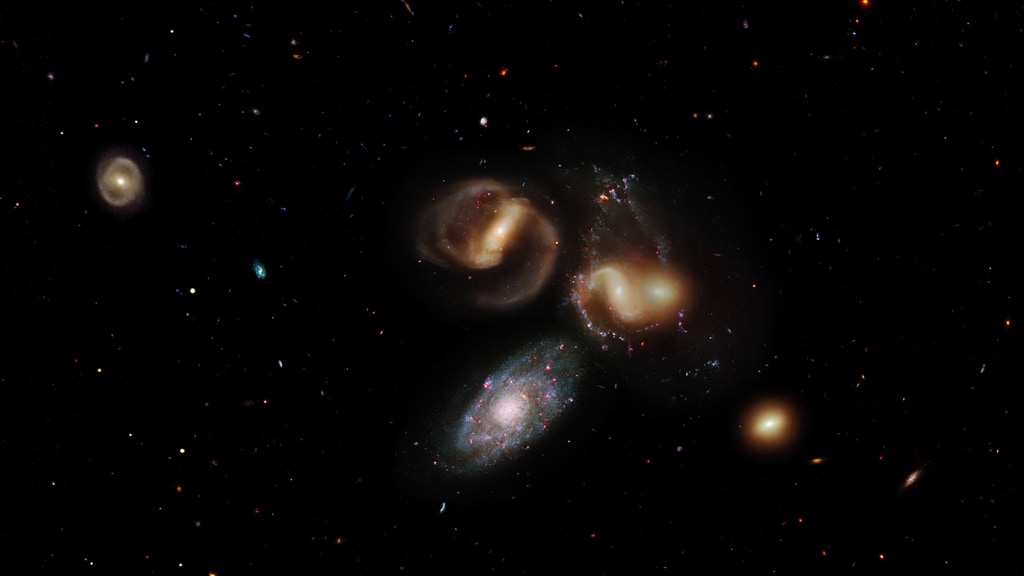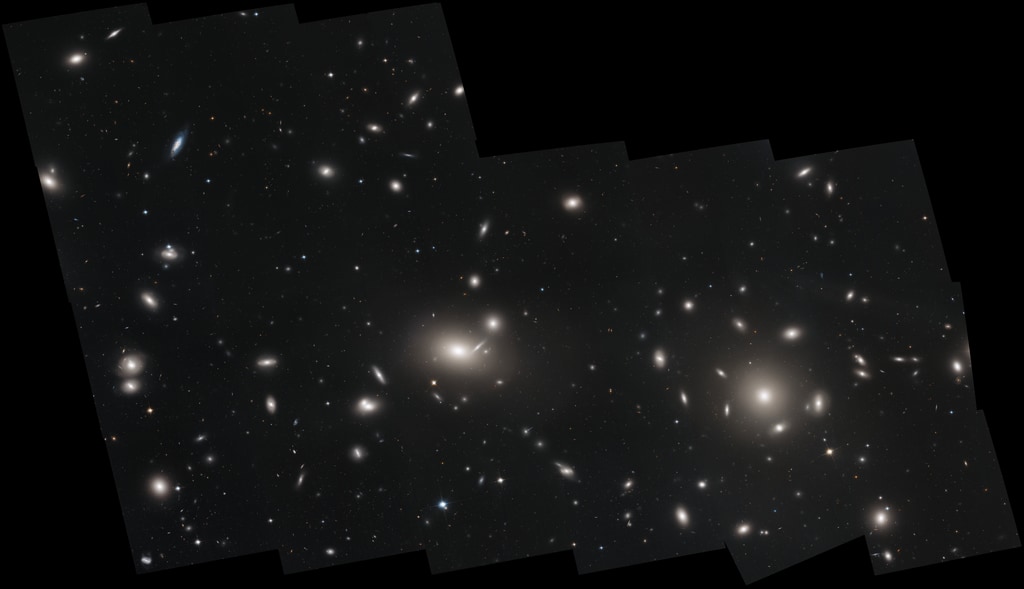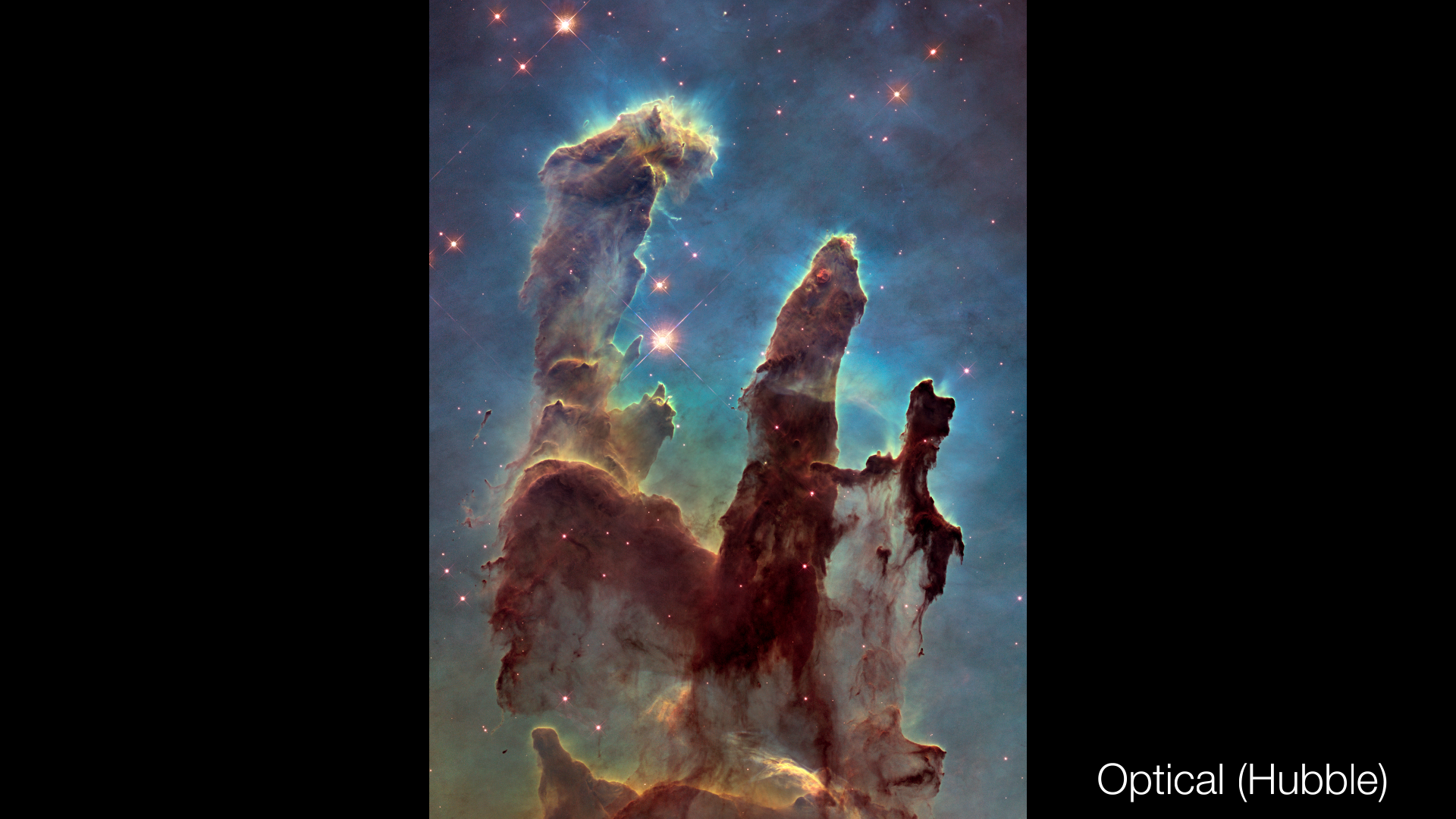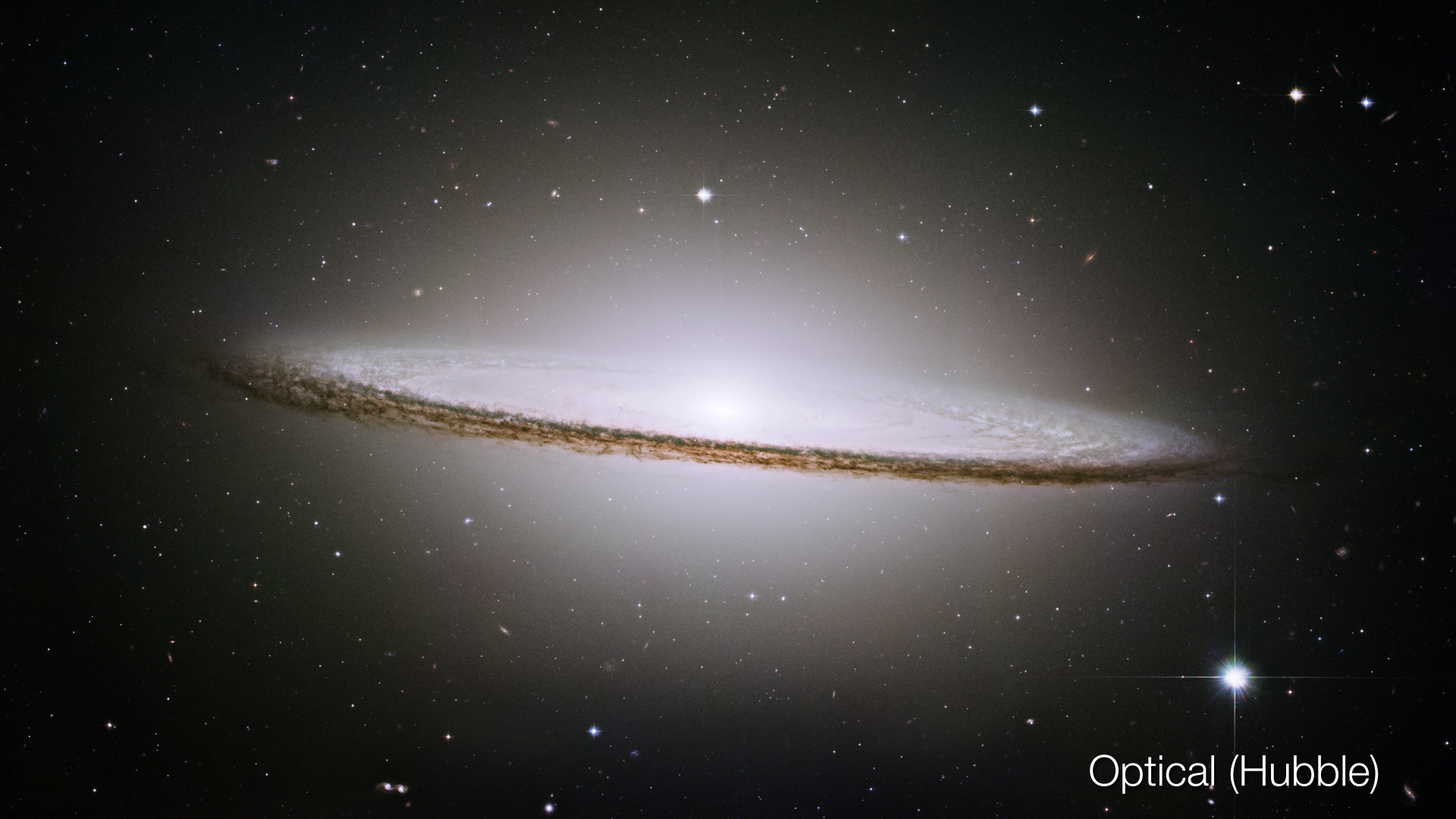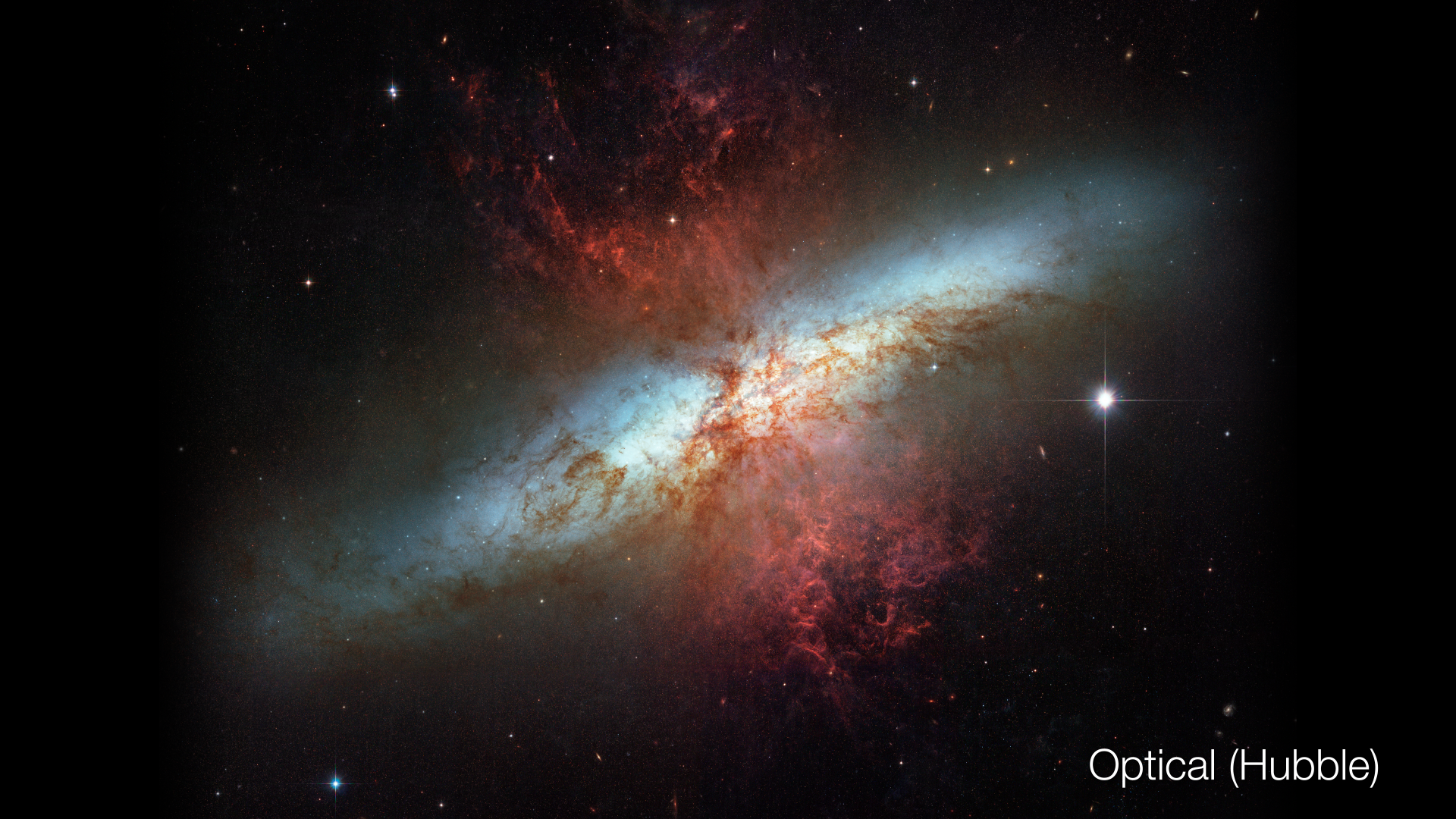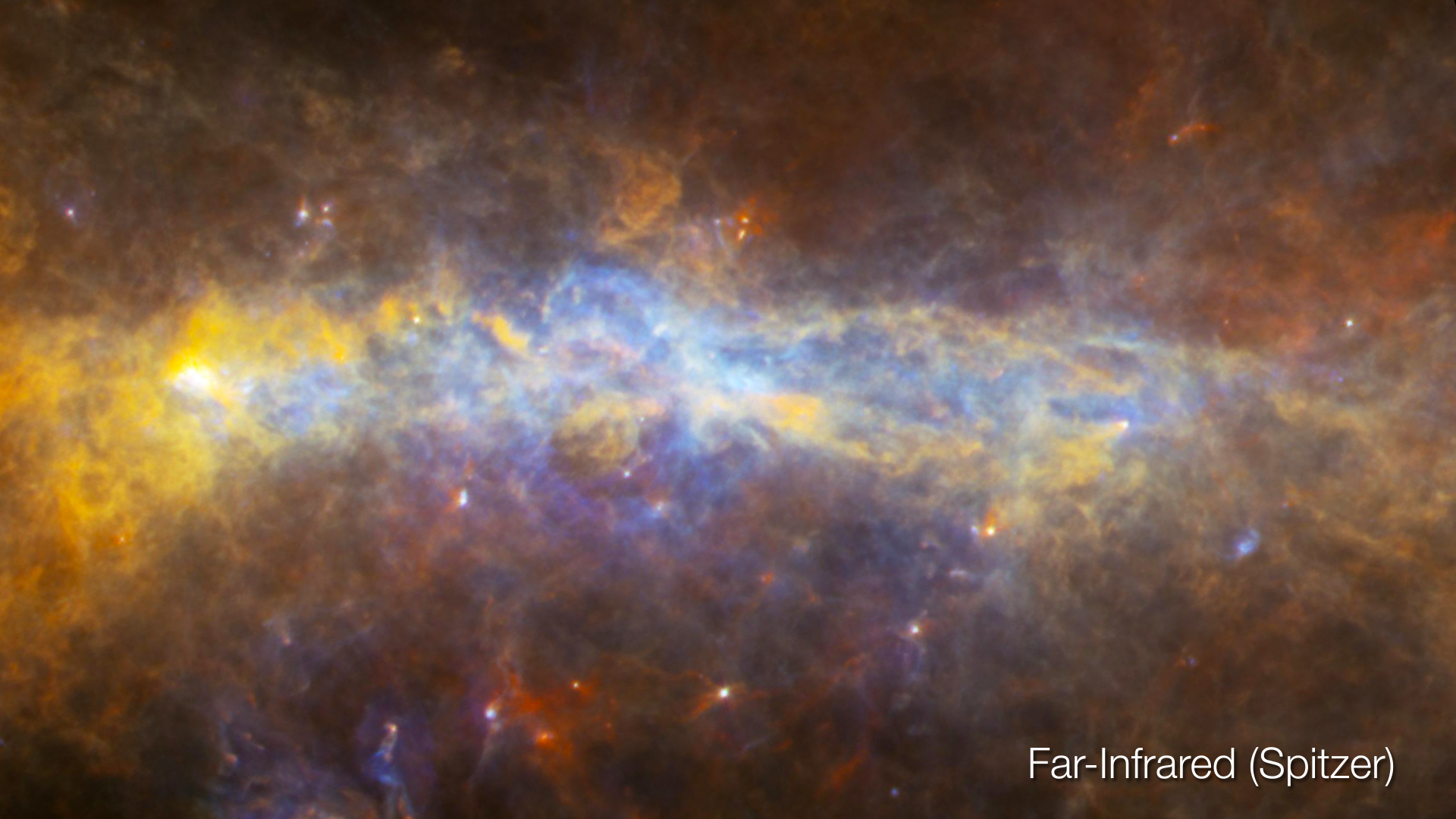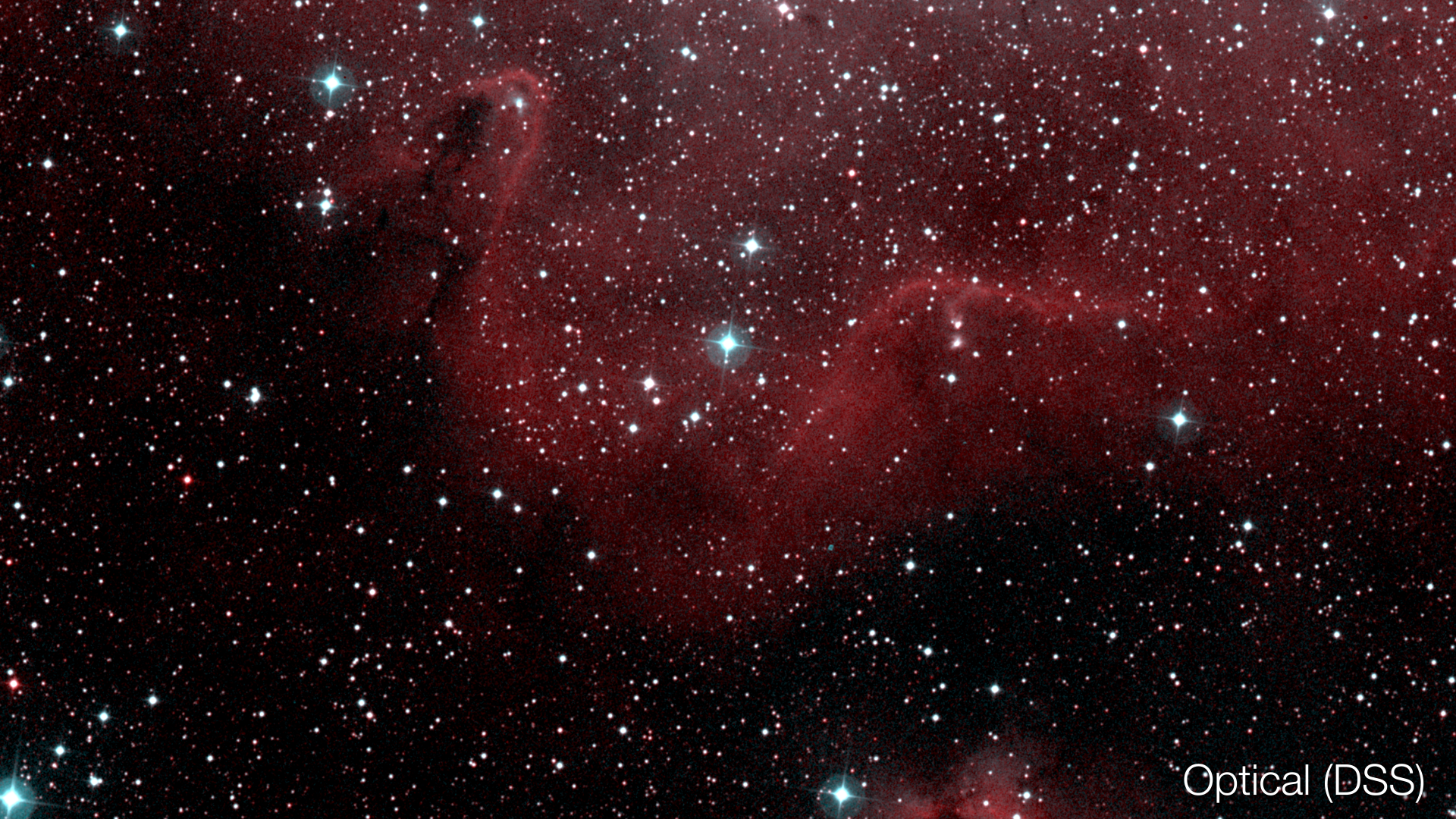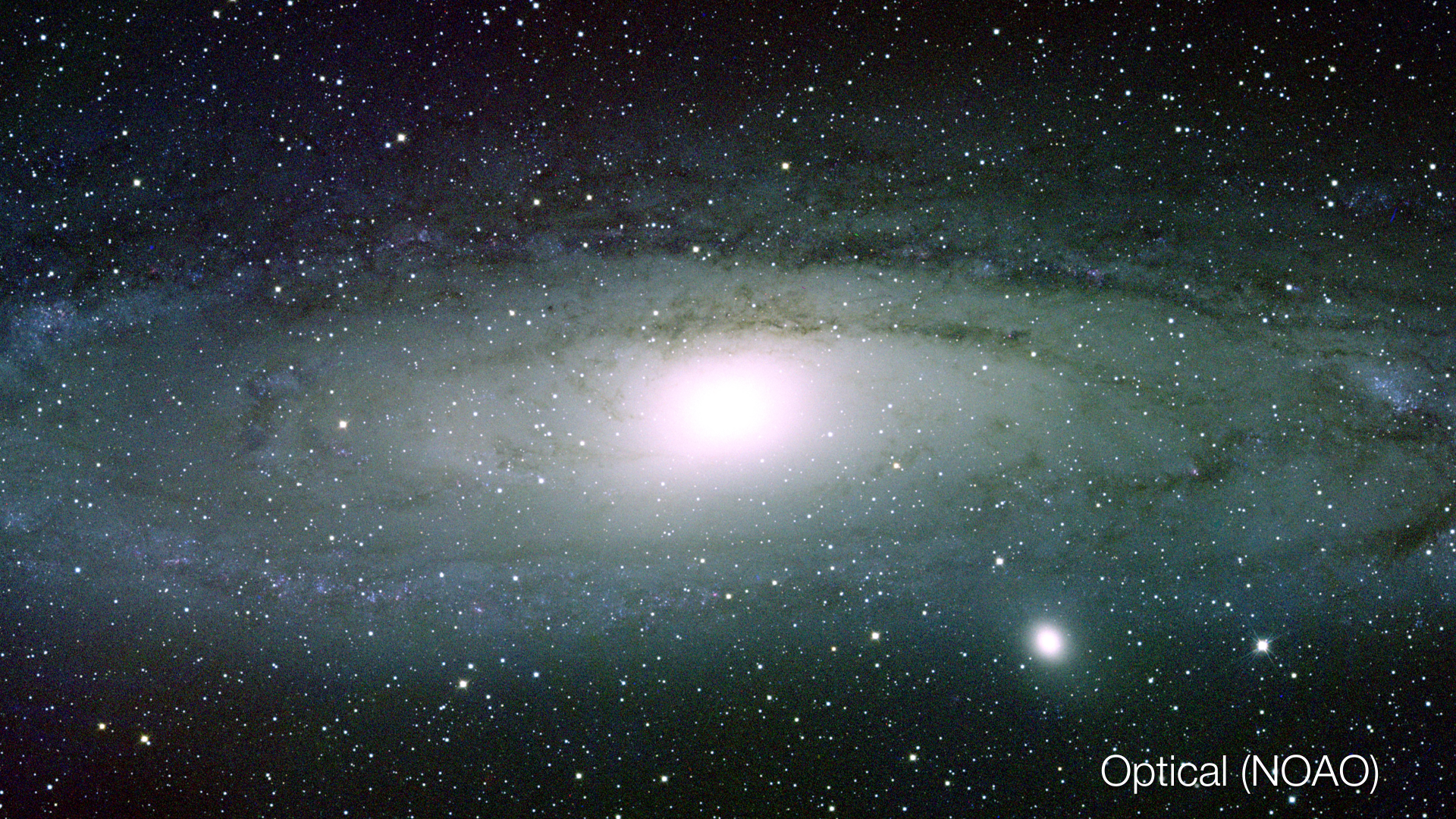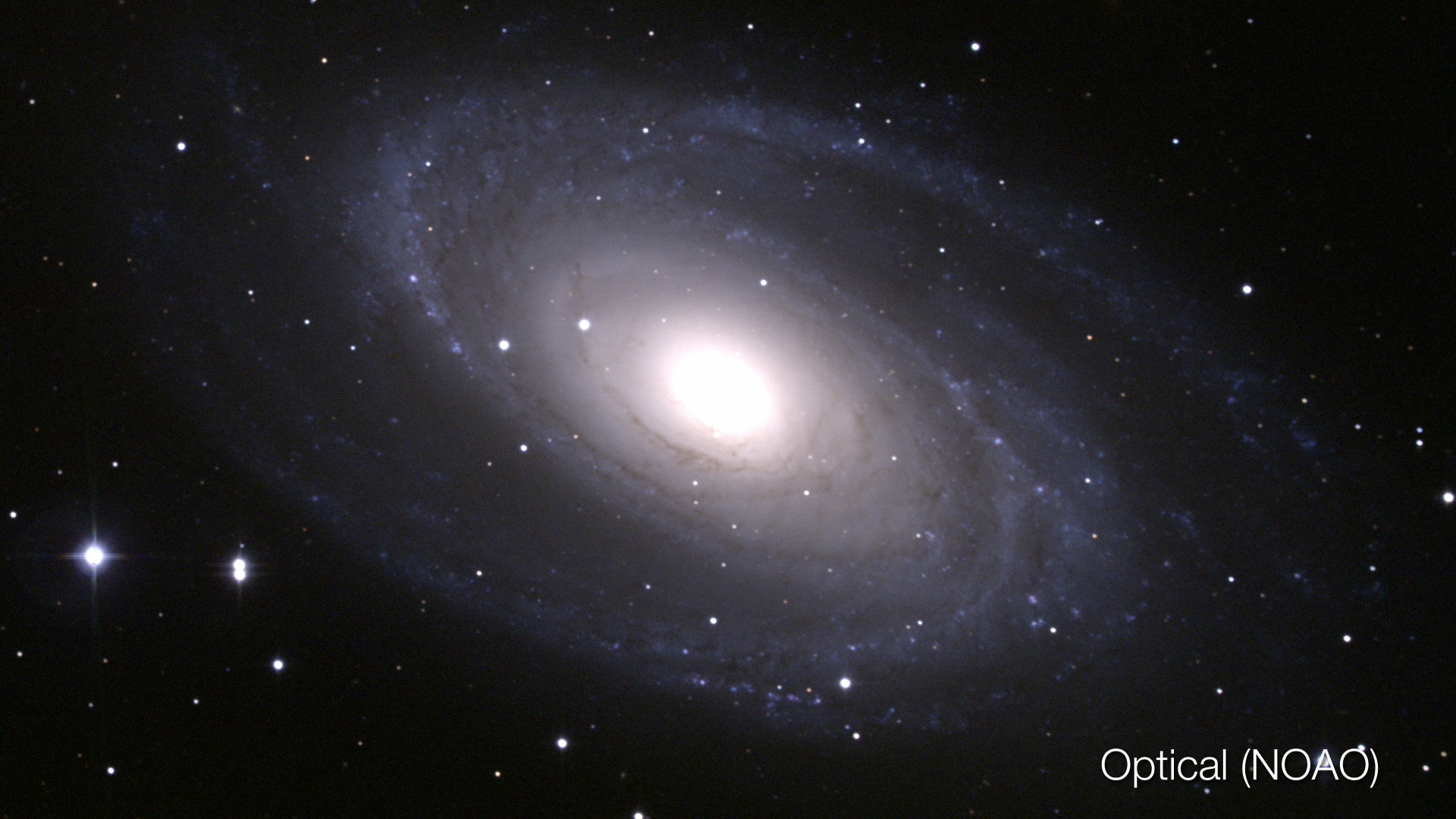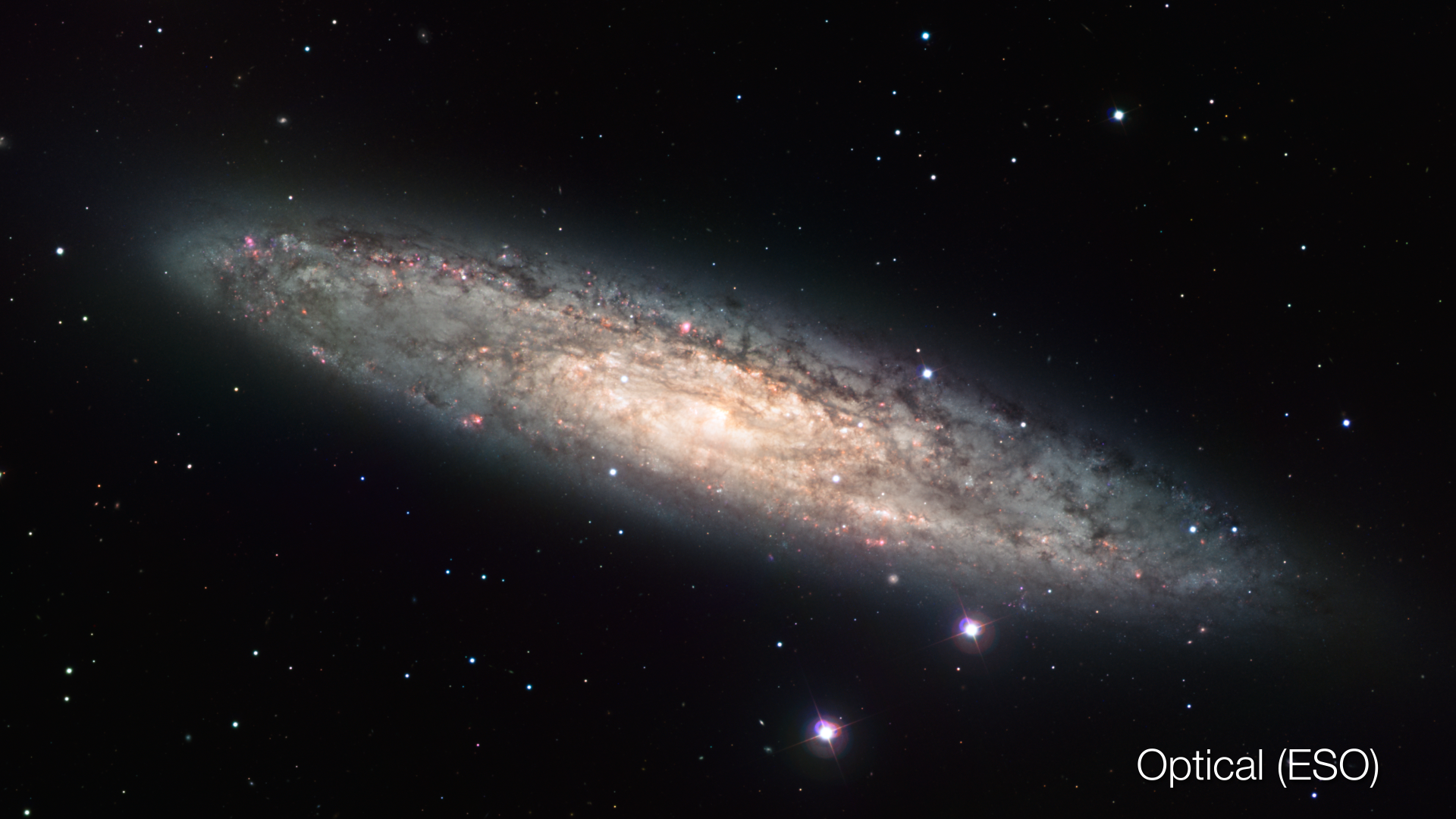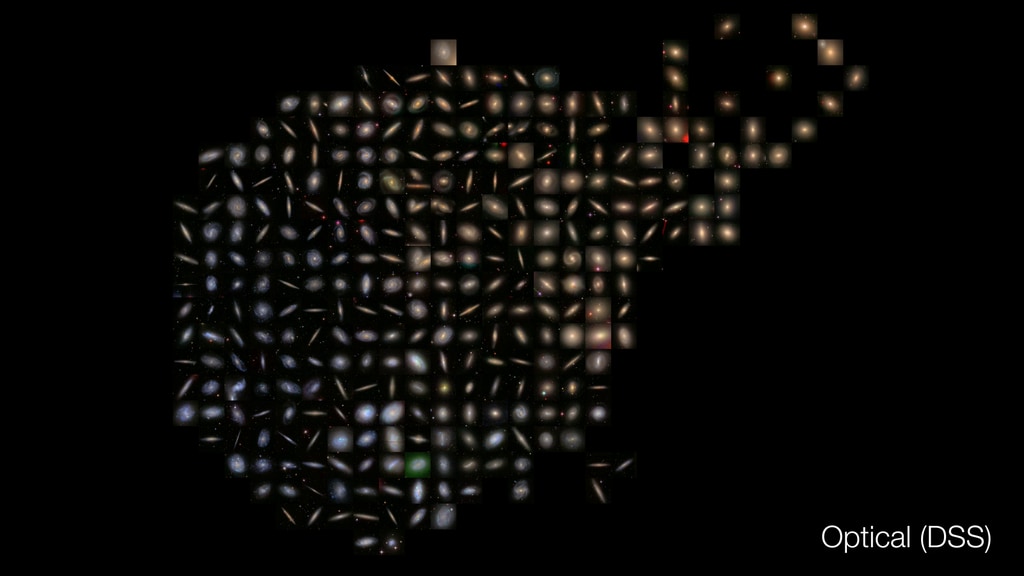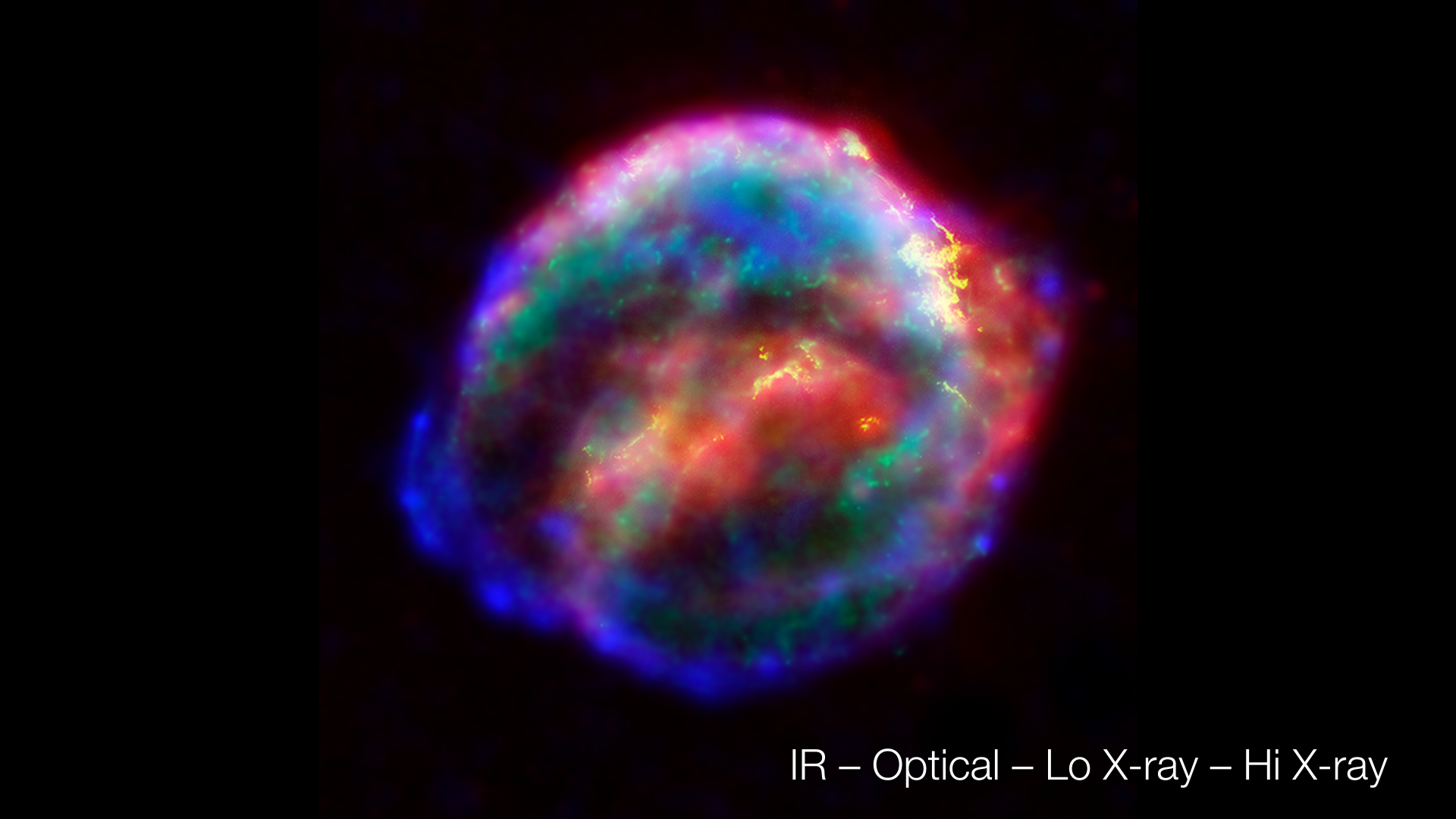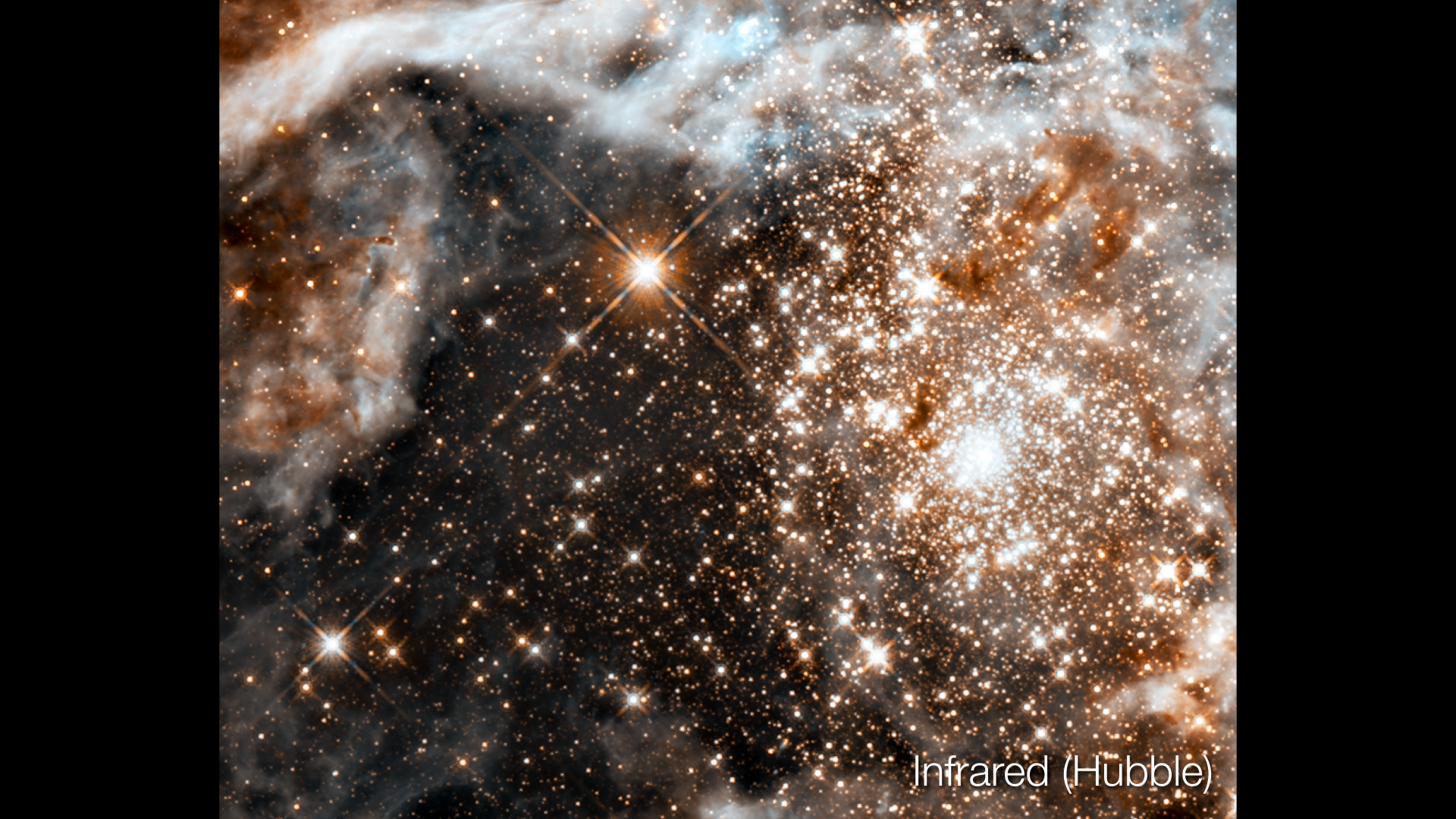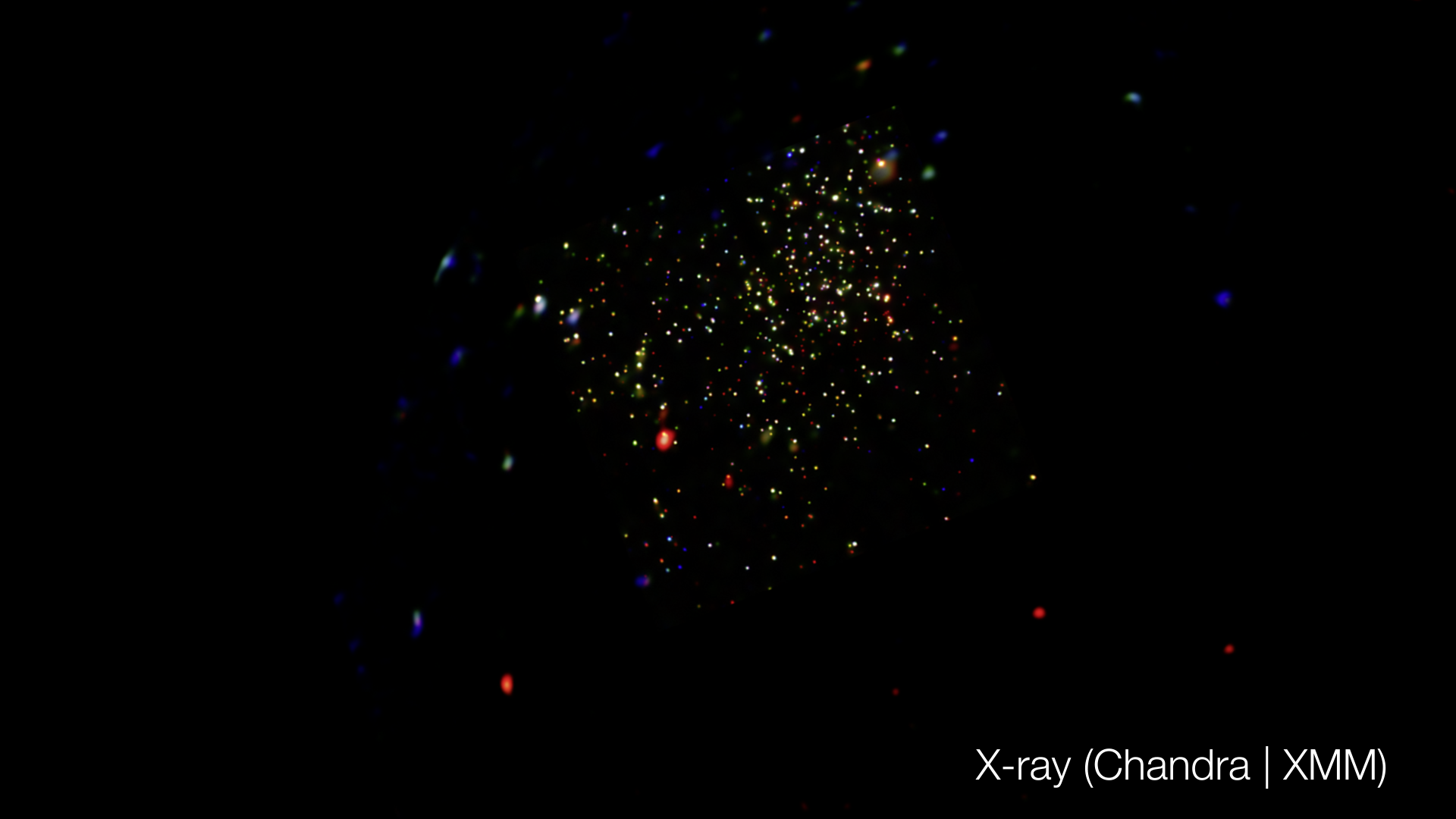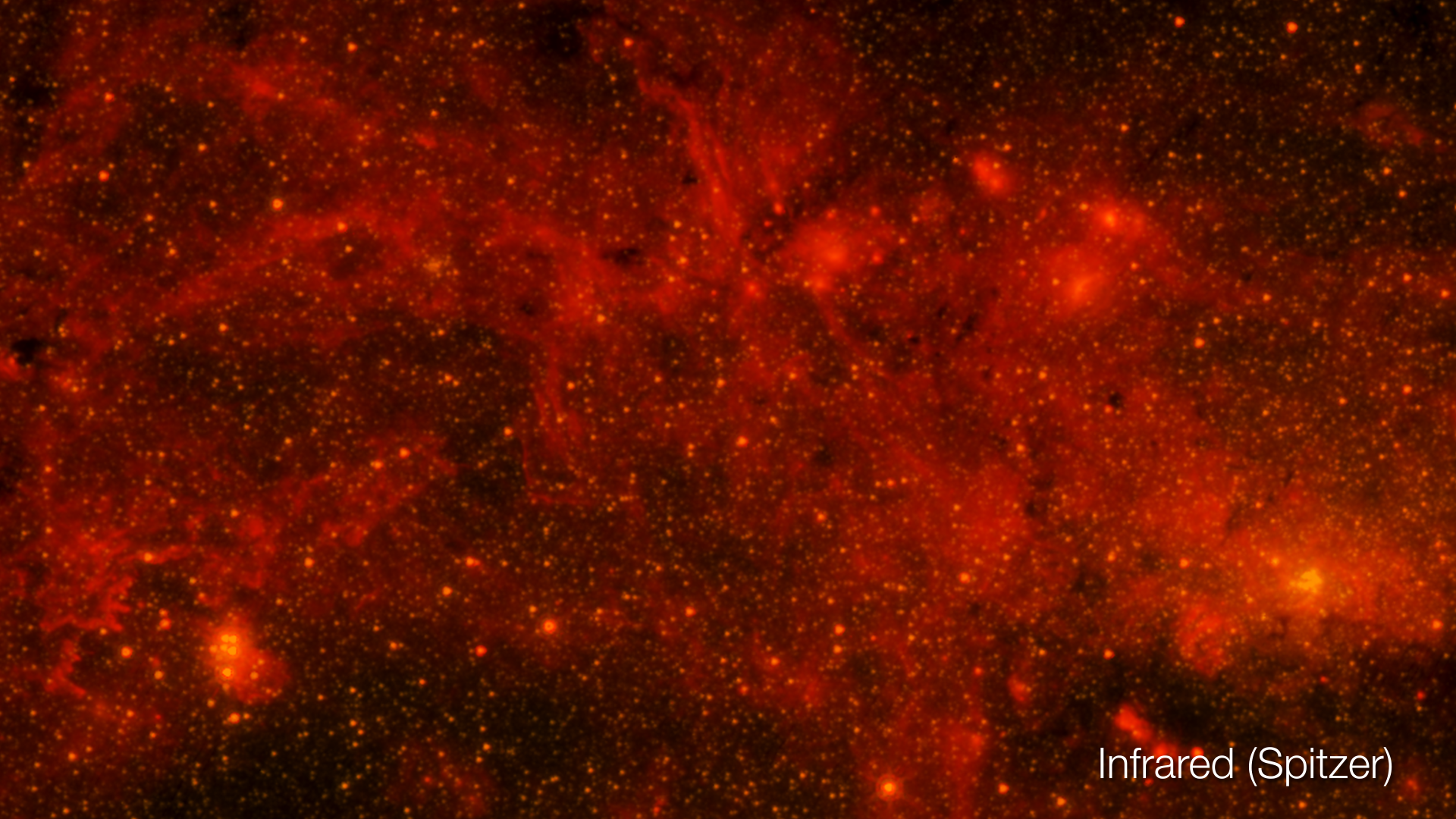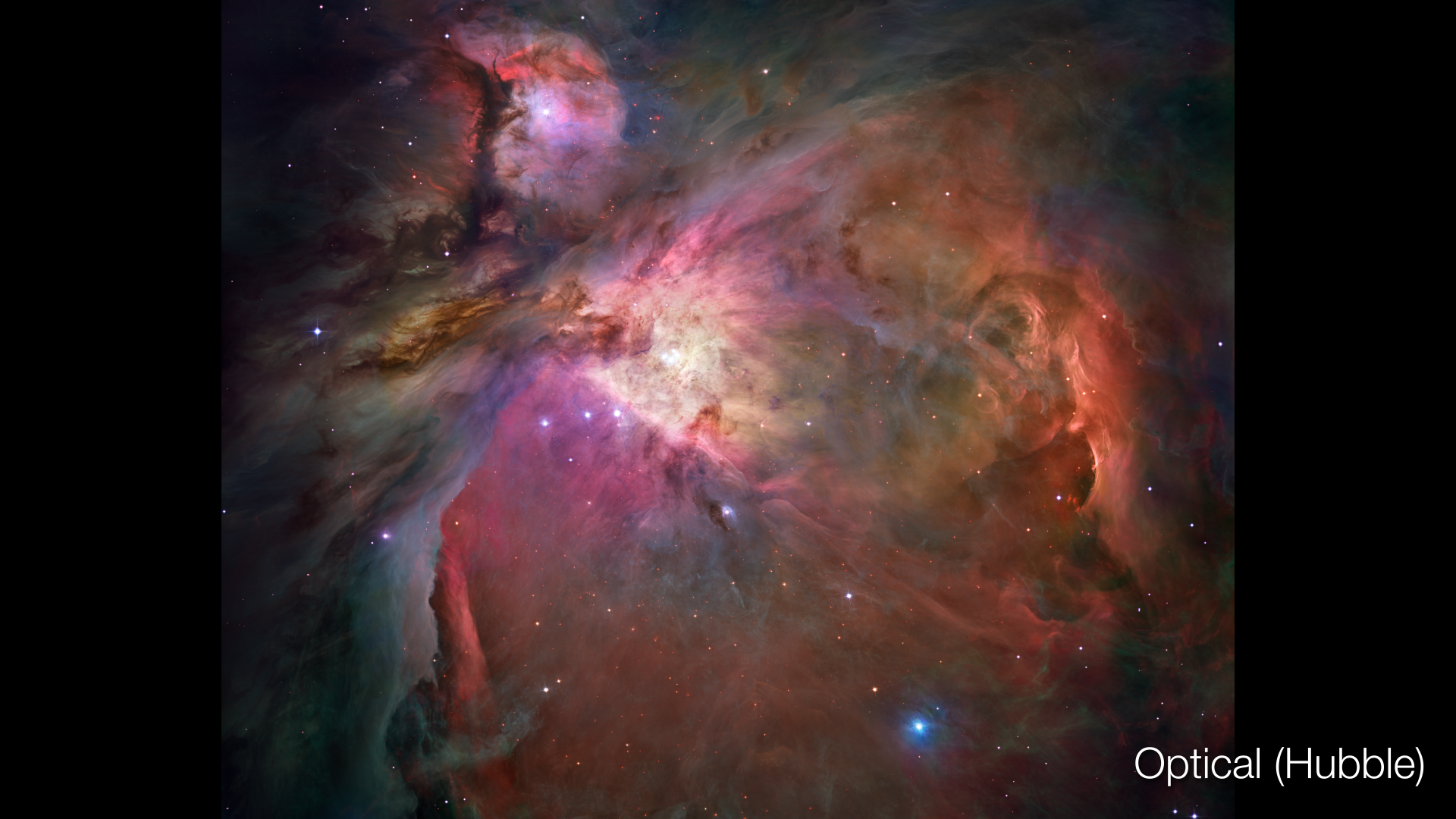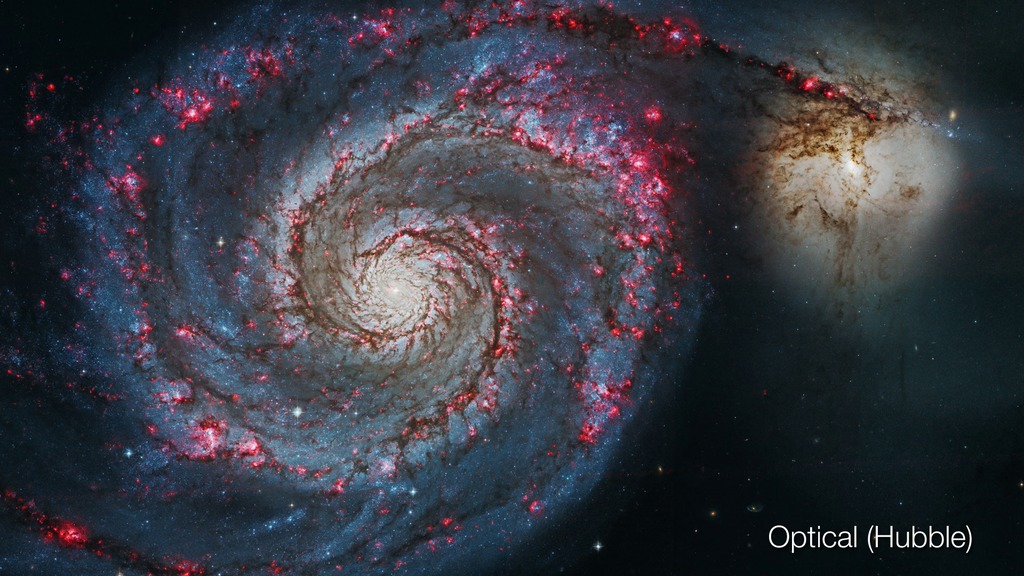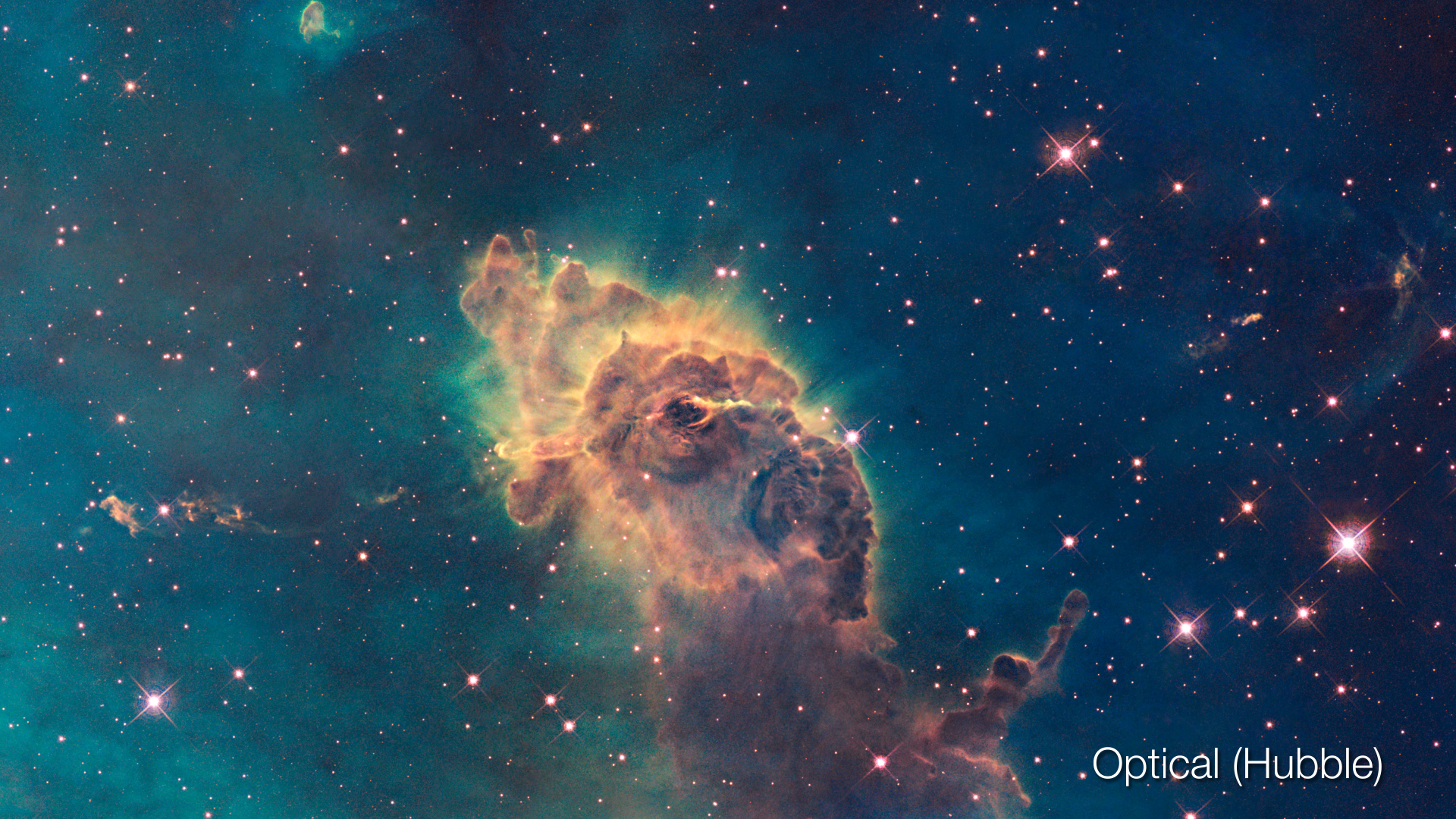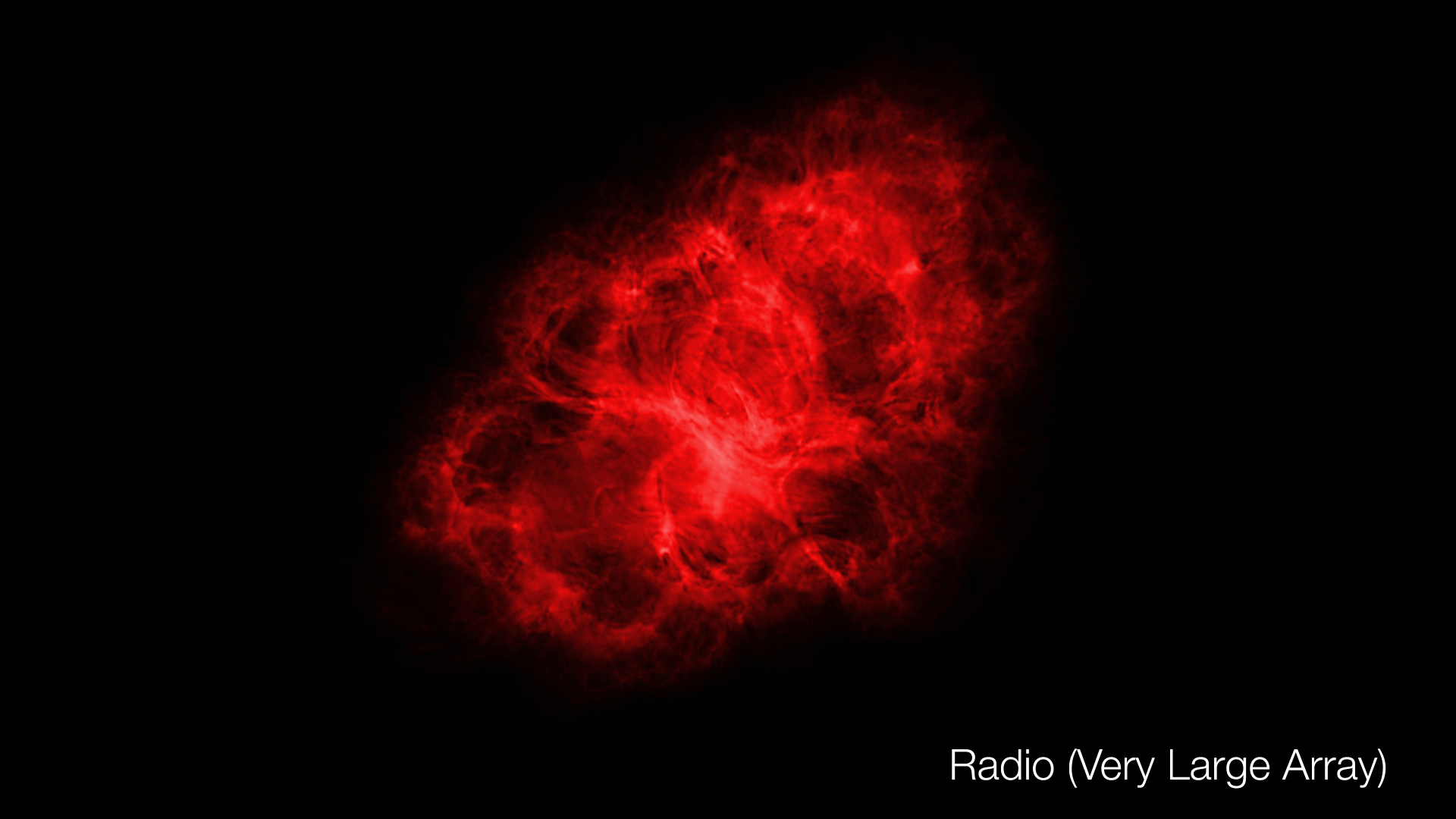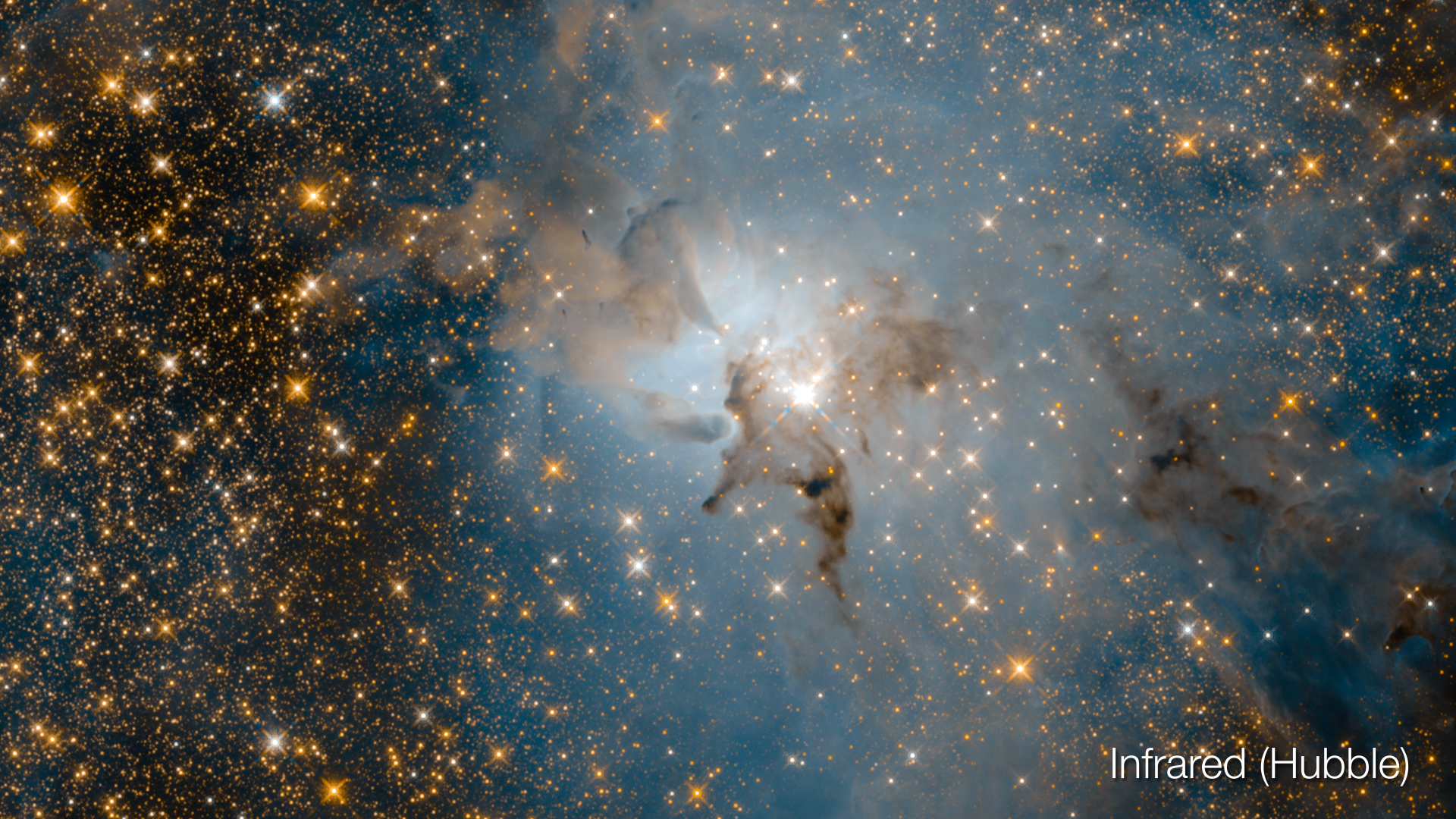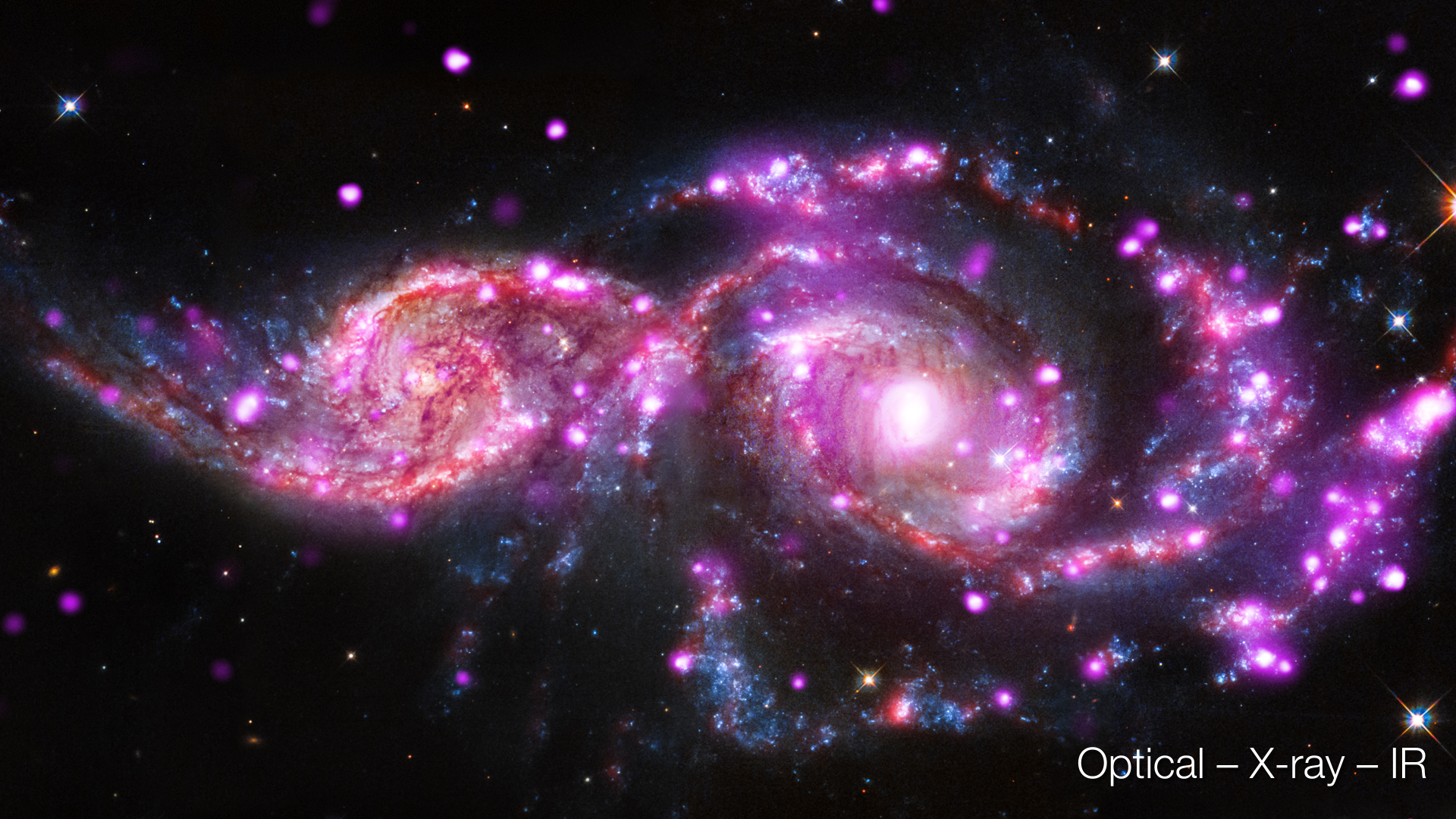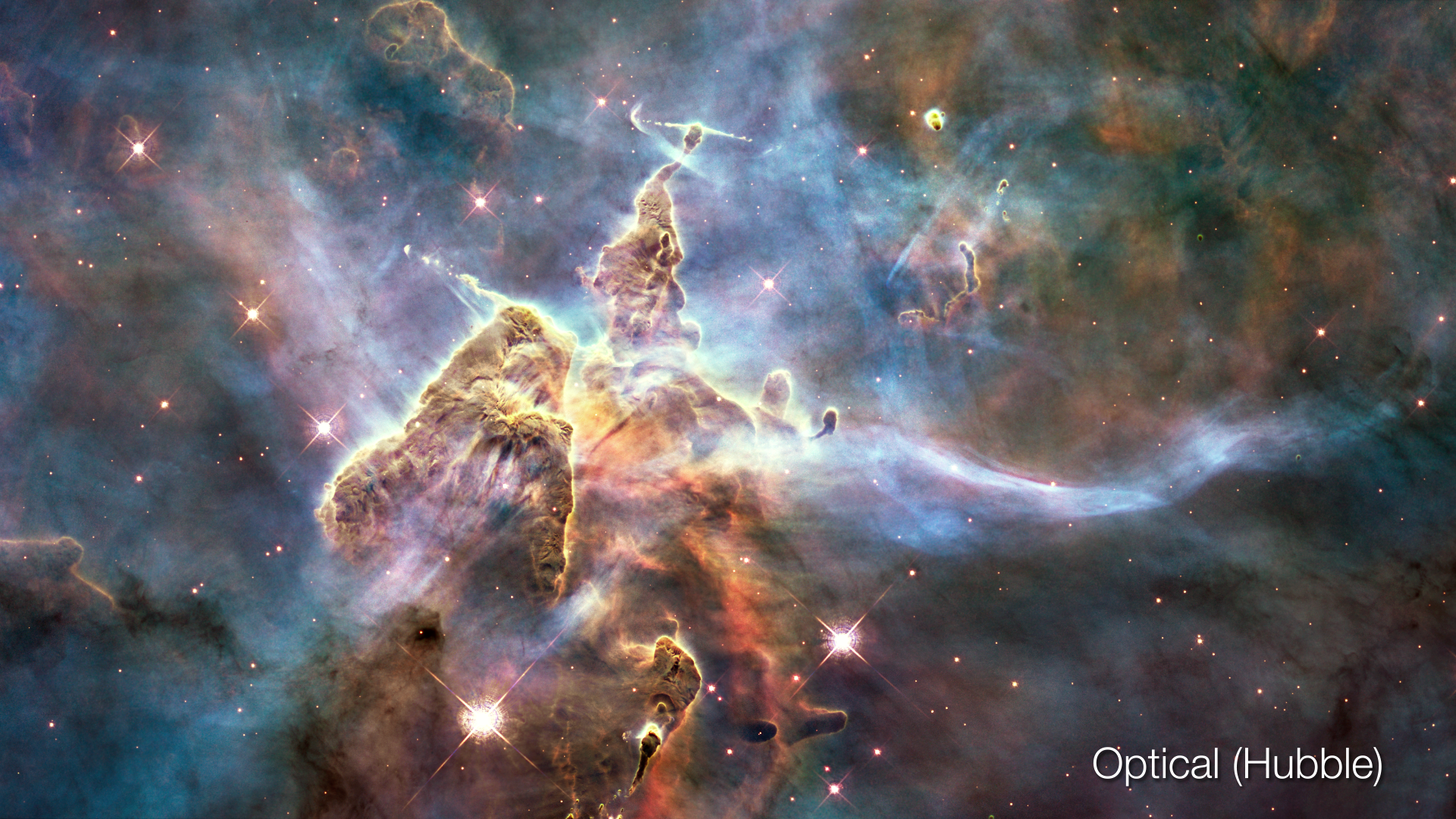Spiral Galaxy M106
This composite image of galaxy M106 focuses on its active center, where large amounts of gas are thought to be falling into and fueling a supermassive black hole.
This portrait of nearby galaxy M106 is a composite of separate exposures acquired by various instruments on NASA’s Hubble Space Telescope as well as ground-based telescopes. It shows the active galaxy’s chaotic center, where large amounts of gas are thought to be falling into and fueling a supermassive black hole. In addition to the starry arms we typically see in spiral galaxies, this image shows red “anomalous arms” of hot gas. Astronomers think the gas is being expelled from the galaxy’s active central nucleus.
Cepheid variable stars in this galaxy were used to refine the cosmic “distance ladder,” which helps us to understand the vast distances of deep space, and how objects there relate to each other in spacetime. Certain Cepheids have a regular cycle of brightness changes, and this special property of these stars reveals how far away they are from us, providing benchmarks for measuring other objects in the universe.
The image was created by astrophotographer Robert Gendler, who is not a professional astronomer but a civilian who took an interest in space and has been photographing the night sky for decades. He used publicly available Hubble data, combined with his own work and that of another astrophotographer, Jay GaBany, to create this hybrid image.
For More Information
Credits
Please give credit for this item to:
NASA, ESA, the Hubble Heritage Team (STScI/AURA), and R. Gendler (for the Hubble Heritage Team); Acknowledgment: J. GaBany
Data Note: Ground based image data provided by R. Gendler and J. GaBany was used to fill in or supplement areas where Hubble data did not exist or was limited.
-
Visualizer
- Greg Bacon (STScI)
-
Image processing
- Rob Gendler (Self)
-
Support
- Jay GaBany (Self)
-
Technical support
- Leann Johnson (Global Science and Technology, Inc.)
Release date
This page was originally published on Monday, February 11, 2019.
This page was last updated on Wednesday, November 15, 2023 at 12:41 AM EST.
Missions
This visualization is related to the following missions:Datasets used in this visualization
-
[Hubble Space Telescope]
ID: 831
Note: While we identify the data sets used in these visualizations, we do not store any further details, nor the data sets themselves on our site.


